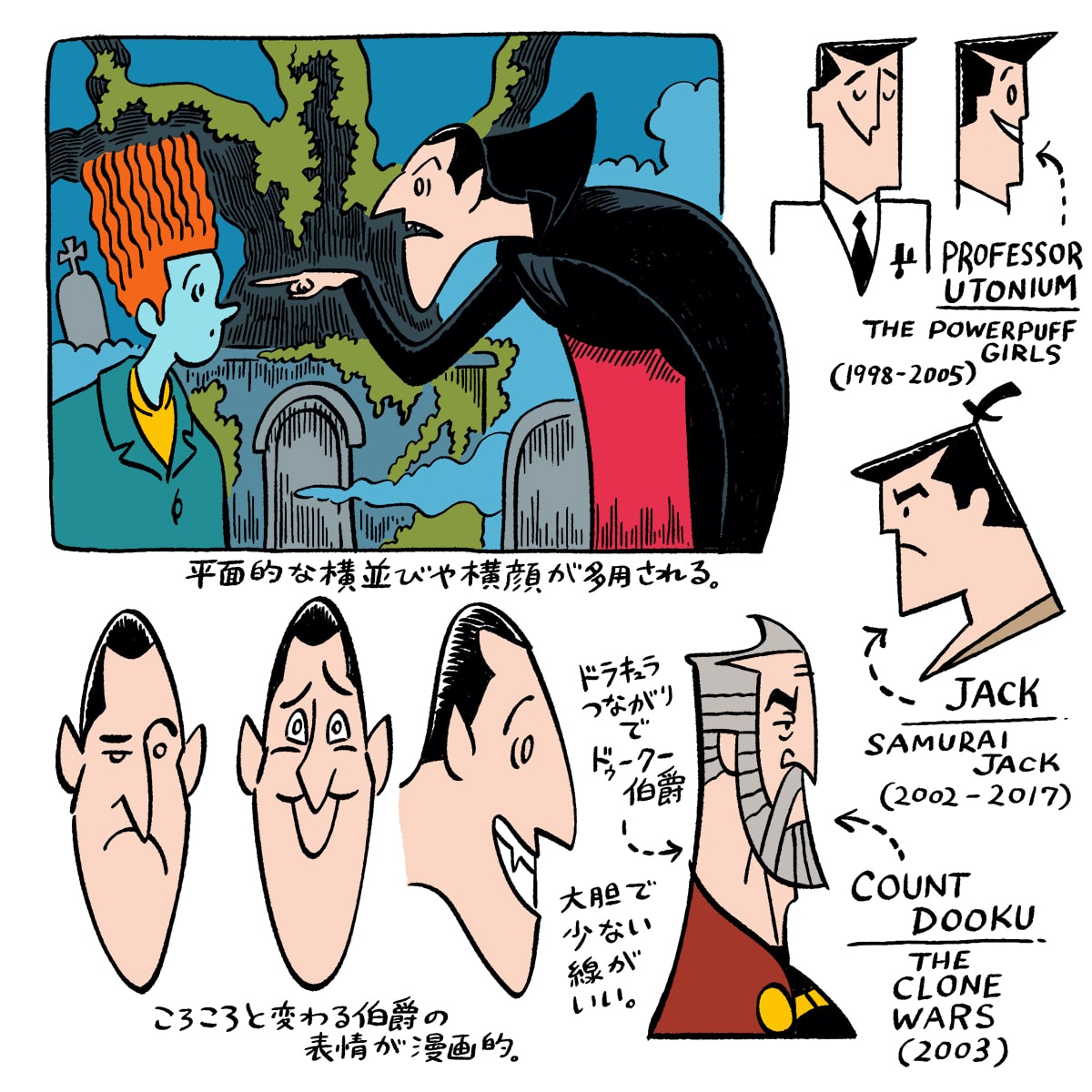cartoon breathing

As a Monster lover (especially Dracula), I enjoyed the parody, but what was more impressive was the cartoon-like feel that can be seen throughout the film. The director of this film, Genndy Tartakovsky, is a creator from Hanna-Barbera and its successor, Cartoon Network, who has worked on the studio's flagship work, " The Powerpuff Girls ," as well as writing and directing "Dexter's Laboratory" and "The Samurai Jack," which also represent Cartoon Network in the 1990s and 2000s. "Hotel Transylvania," which he worked on after moving to Sony Pictures Animation, is his debut as a feature film director.
Hanna-Barbera is famous in Japan for its " Wacky Races, " "The Flintstones," and " The Jetsons ," and is characterized by boldly deformed characters with clear black lines, but its genes are firmly inherited in the works of Cartoon Network, which was born as a subsidiary of Hanna-Barbera (Hanna-Barbera itself was absorbed by Warner and ceased to exist). This is clear when you look at "The Powerpuff Girls," in which three extremely deformed girls fight evil in a similarly symbolically simplified city, and Tartakovsky's "Dexter's Laboratory" and "The Samurai Jack" also have impressive linear designs.
In Monster Hotel, there are many scenes where the characters are lined up side by side and their faces are shown in profile, but this has a very flat anime-like atmosphere, or rather a Hanna-Barbera-like atmosphere ( (Remember how the cars and characters keep moving sideways in ``Chitty Chiki Machine Fierce Race'').
The slapstick antics between Johnny, who remains unfazed by the real monster, and the Count, who tries to intimidate him and drive him away, also seem to be influenced by slapstick cartoons such as " Tom and Jerry " and " Looney Toons. " ("Tom and Jerry" was created by William Hanna and Joseph Barbera, who later founded Hanna -Barbera, while they were still working at MGM.)
Even the design of Dracula and the others is not as realistic as modern CG characters that gain more and more lifelike texture by layering textures, and it gives the impression of a figure that is just a flat character, but I feel that this level of CG is a good fit for the feel of classic animation. I think that the simple face of Dracula also has something in common with the face of Professor Utonium from "The Powerpuff Girls", who is drawn almost entirely with straight lines, and Jack, the main character of "The Samurai Jack".
Speaking of Tartakovsky, he also directed the Star Wars spinoff animated series Star Wars: The Clone Wars during his time at Cartoon Network. This series consists of 25 episodes, with each episode lasting from 3 minutes to 12 minutes, and takes place between Star Wars Episode II: Attack of the Clones and Episode III: Revenge of the Sith, with the aforementioned distinctive touch. The CG animated series Star Wars: The Clone Wars , which was released later, has a greater presence today, but Tartakovsky's 2D animated version can be considered a prototype.
Since there is no direct connection to the content and the CG version is left as the official version, it cannot currently be viewed on Disney's streaming services; however, characters that first appeared in the 2D version continue to appear in the CG version, and there are still some similarities in the character designs, so it has had some influence.
As the name suggests, "The Clone Wars" depicts the legendary war that decided the fate of the Jedi Knights and the Galactic Republic, and the main focus is on the battles between Jedi including Anakin Skywalker and Obi-Wan Kenobi. The sharp action that the series no doubt developed in "The Samurai Jack" is fully utilized, and spaceships drawn in cartoon rendering fly around with a three-dimensional presence, so despite the flat images, the film is able to depict a world with depth, which is very appealing.
"Hotel Transylvania," which has a cartoon-like atmosphere despite being CG, was created with the same sensibility, and one can't help but wonder whether, if Tartakovsky had continued to work on the CG version of "The Clone Wars," it would have been a work that combined the best of both dimensions.

!["Monster Hotel" as a CG cartoon [Mizumaru Kawahara's CINEMONOLOGUE Vol.47]](https://cinemore.jp/images/363ed2851c3eb62a32470736b3a0ef0e5bc2ee901c5aa85245d994f2eb063a4f.jpg)
